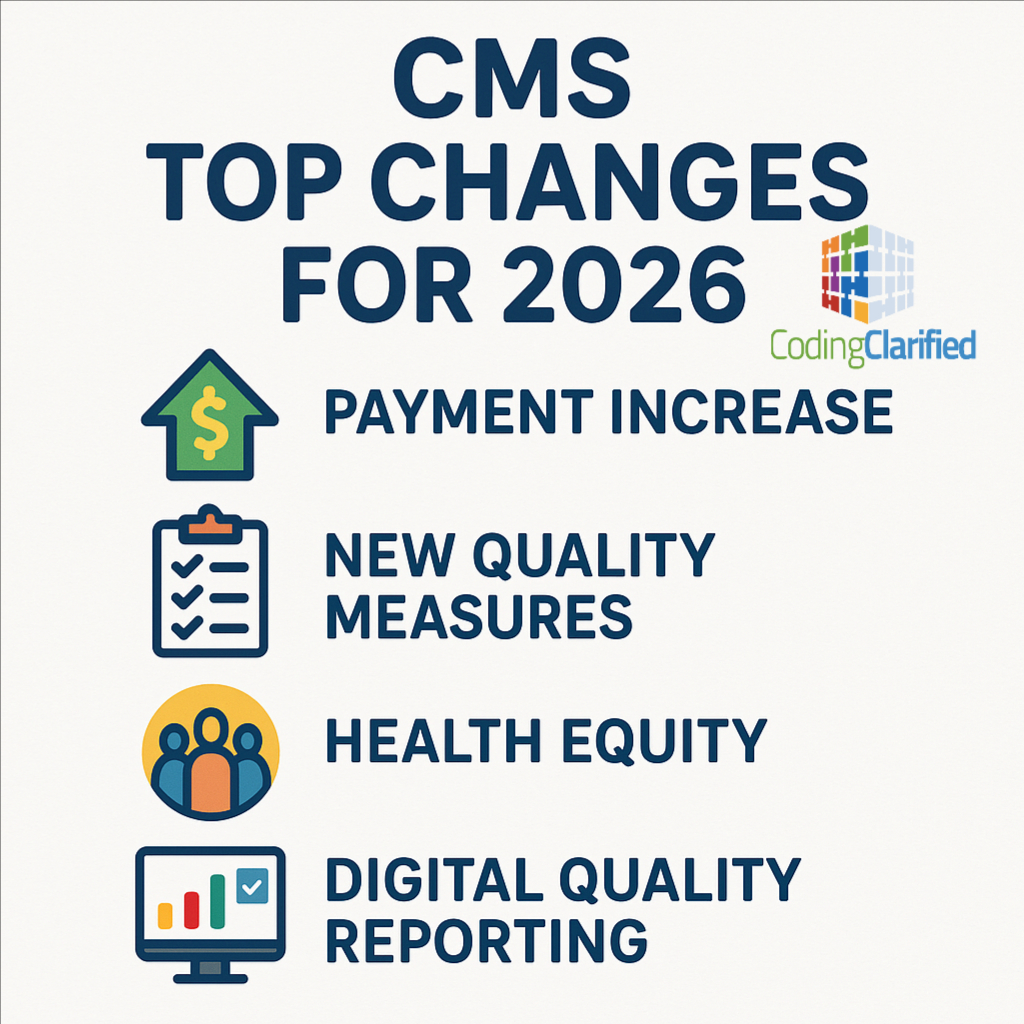Here’s a detailed overview of the finalized CMS Top Changes for 2026, including policy and payment changes affecting Medicare Advantage (MA), Part D, traditional Medicare, and ACA Marketplace plans:
Medicare Advantage (Part C)
-
In the final CY 2026 Rate Announcement, CMS is increasing payments to MA plans by an average of 5.06% over 2025, higher than the initial 4.33% projection in the Advance Notice. These increased payments represent over $25 billion in additional funding for MA contractors
-
Key drivers include a rise in the effective growth rate and adjustments in the risk scoring model and normalization
-
CMS finalized more detailed prior authorization guardrails to limit burdensome utilization management by MA plans, along with new restrictions on non‑health-related Special Supplemental Benefits for the Chronically Ill (SSBCI), including bans on coverage for non‑healthy food items
Medicare Part D
Part D Redesign & IRA Implementation
-
CMS issued the Final CY 2026 Part D Redesign Program Instructions (dated April 7, 2025), providing guidance on IRA-implemented changes, including the Medicare Drug Price Negotiation Program (MFPs) and formulary inclusion requirements for selected drugs
-
Under the Part D redesign for 2026:
-
The out-of-pocket (OOP) threshold rises to $2,100 (up from $2,000 in 2025), indexed for inflation
-
The insured remains responsible for 25% coinsurance during the initial coverage phase; CMS and manufacturers cover the balance, with CMS taking responsibility for a 10% subsidy on selected drugs during price applicability periods
-
In the catastrophic phase, cost-sharing drops to zero, and CMS provides 40% reinsurance for selected drugs during pricing periods
-
Codified IRA-Based Benefits
-
No deductible and zero cost-sharing now apply permanently for Part D-covered adult vaccines recommended by ACIP, as well as covered insulin products—consistent with IRA mandates
-
CMS also codified rules for the Medicare Prescription Payment Plan (MPPP): starting 2026, beneficiaries are automatically re-enrolled each year unless they opt out, helping spread drug costs over time
What Didn’t Make It
-
CMS formally declined to finalize proposals allowing Part D/ D/Medicaid coverage of anti-obesity medications (AOMs) like GLP-1 agents for chronic weight management, overturning prior regulatory reinterpretations
-
Proposed AI regulations and enhanced health equity analyses regarding utilization management were also not finalized, though CMS may revisit these in future rulemaking
Traditional Fee-for-Service Medicare
While MA and Part D dominate the headlines, the CMS final rule also extended updates to traditional Medicare, particularly:
-
New prior authorization programs in six states—New Jersey, Ohio, Oklahoma, Texas, Arizona, and Washington—using the WISeR AI-assisted review system to reduce unnecessary services and improve efficiency
ACA Marketplace Plans
Although CMS’s April 2025 final rule focuses primarily on Medicare programs, many Part D and MA policies—vaccine and insulin cost-sharing, and negotiated drug price implementations—could also indirectly influence ACA Marketplace plans, especially those offering Part D-equivalent coverage or aligned cost-sharing features. However, explicit 2026 Marketplace plan policy guidance is not outlined in this rule.
Summary Table: Key Policies Finalized for 2026
| Program | Major Finalized Changes |
|---|---|
| Medicare Advantage (MA) | +5.06% payment increase; stronger prior authorization guardrails; SSBCI benefit restrictions |
| Medicare Part D | OOP cap raised to $2,100; cost-sharing caps on insulin & vaccines continue; MPPP auto‑renewal; IRA drug negotiation provisions in effect |
| Traditional Medicare | AI-supported prior auth pilot across six states via WISeR system |
| ACA Marketplace | No direct rule changes, but spill‑over effects from Part D and drug pricing reforms are likely |
Why It Matters
-
Beneficiaries may see lower drug costs, improved predictability, and enhanced protections starting in 2026—especially for insulin and vaccines.
-
Health plans (MA and Part D sponsors) will receive higher payments but also face stricter oversight around prior authorization and supplemental benefits.
-
Although there’s no Medicare coverage for obesity drugs, cost-sharing improvements reflect the CMS commitment to IRA-based reforms.
CMS releases 2026 proposed Medicare fee schedule with big changes
Medical Coding Medicare Exams https://codingclarified.com/medical-coding-medicare-exams-2/
Medical Coding and Billing for Medicare https://codingclarified.com/medical-coding-and-billing-for-medicare/
ICD-10 2026 guidelines https://www.cms.gov/files/document/fy-2026-icd-10-cm-coding-guidelines.pdf

